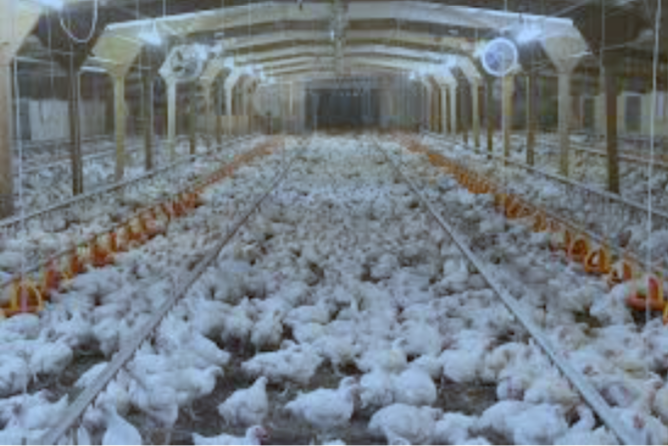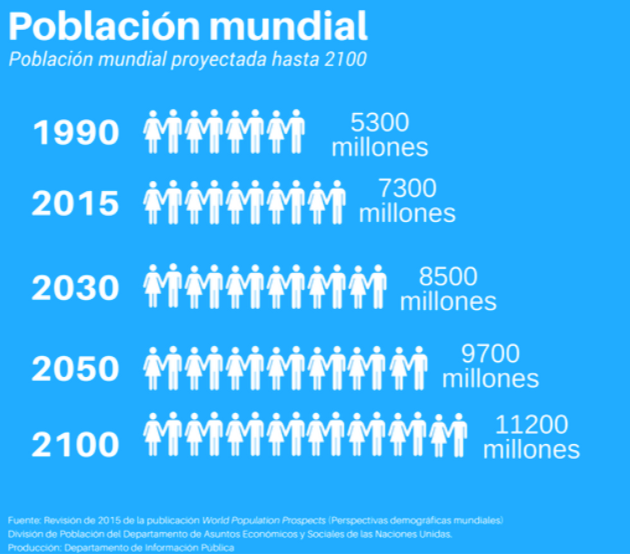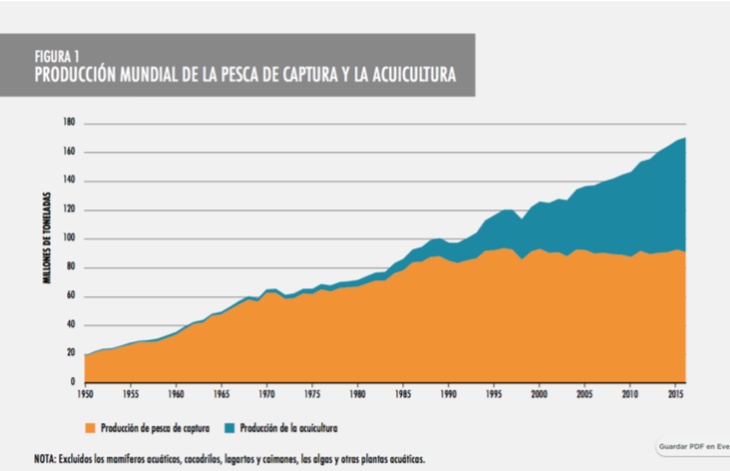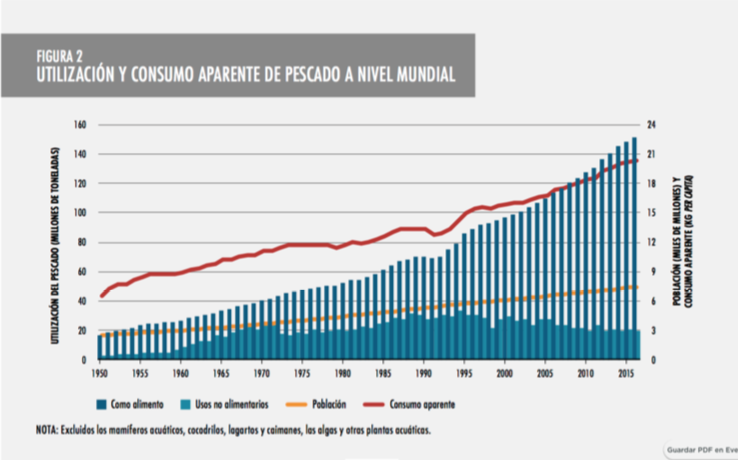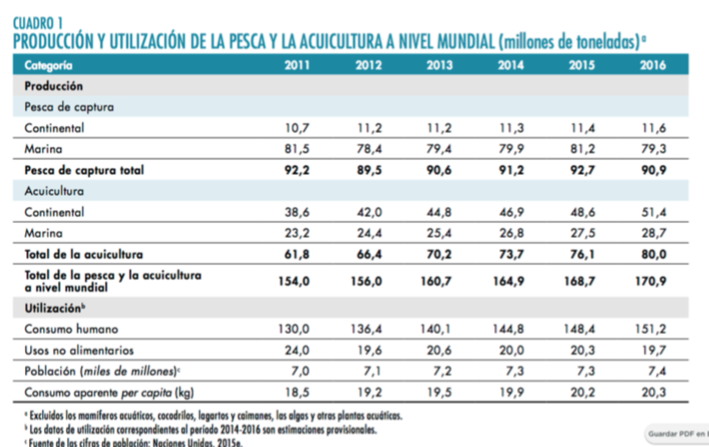Are we heading towards a global food crisis?
How does our diet influence the climate crisis?
About the increase in global population, the depletion of natural resources and the reduction of available land.
Introduction
The UN Panel of Experts on Climate Change, following the 2016 Paris Agreement, was tasked with assessing the relationship between land use and global warming of the Earth. Recently this Panel has released its conclusions that make one thing clear: many things must change about how humans obtain food, proposing new solutions to reduce greenhouse gas emissions to save the planet from the effects of the crisis. climate and air, water and soil pollution. And that means changing your diet among other things. Experts warn us about excesses in land use, and the negative effects they can have on our ability to produce food, but the report does not analyze the evolution of fishing and aquaculture resources, or how pollution threatens the sustainability of the same, and how global food production could be affected given the foreseeable increase in the world population and the growing demand for them from the most populated societies with high rates of development.
Brake on the bioenergy formula
Biodiesel displaces food on a global scale, the report warns. One of the solutions generally adopted by states to meet their emissions commitments has been the commitment to biofuels. Bioenergy obtained from crops such as palm or rapeseed. Experts warn of the risks and assure that there are limits to the cultivation of these varieties. Because? The proliferation of these plantations can have “irreversible” effects on the desertification of the land.
What the Panel describes is that the idea of cutting CO2 emissions by replacing fossil fuel with, for example, biodiesel, tends to create competition for land between crops for energy and those intended to produce varieties that feed the population.
The document includes a warning: “Many of the responses take time to produce their effects”. Without going any further, they point out that measures such as changing the way of production or varying the diet require a period of adaptation. Even the reforestation of the vegetation cover is not achieved quickly because the plants need time to grow and develop.
Desertification, soil degradation and deforestation
The intensive use of the soil leads to its degradation: deforestation, applying large amounts of fertilizer and multiplying livestock. The soil treated in this way becomes a gas storage system and a gas emitter. But, in addition, experts have observed that the land exploited under these premises tends to degrade, it becomes more vulnerable, and stops producing. The UN reminds us that we must continue using the land to obtain food, so depleting it is bad policy. “There is a limit to what can be done. Some effects may be irreversible”, the IPCC clarifies.
How food influences the climate crisis
After years and years of addressing the emission of greenhouse gases to generate electricity in thermal power plants or the use of hydrocarbons for transportation, the UN says that it is necessary to change the way food is produced. Science indicates that at least 23% of the gases responsible for climate change come from this way of obtaining food. Experts estimate that food production releases about 11 gigatons of gases into the atmosphere. There are 11,000 million tons of greenhouse gases based on agricultural practices, changes in land use, storage, transportation, processing, packaging and consumption of products. The IPCC has calculated that the amount of gas that could still be emitted to contain the temperature increase to 1.5oC is 570 Gt. If all the sources that cause these emissions to increase without ceasing are not tackled, the numbers are not enough.
Ensuring there is food for everyone is one of the main concerns
But it is a two-way street. Production methods exacerbate the climate crisis and the effects of climate change put food supplies at risk. It affects the entire chain: the harvests are worse so there is less food available. This worsens access to food, which makes food more expensive and of poorer quality.
Climate food bill
Most of the planet’s land surface is dedicated to producing food or clothing. Up to 72% of the ice-free land is intended to support the population. The report explains what this pressure implies: the increase in food production has accelerated the intensive use of land. It has also forced an increase in the application of nitrogen-based fertilizers and water consumption for irrigation.
All this has multiplied emissions. The change in land use to sustain this growth global has contributed to the amount of CO2 released “especially due to deforestation”, they explain. That is, the disappearance of trees to make way for crop fields or pastures for flocks. The amount of nitrous oxide emitted (N2O) by agriculture and methane (CH4) by livestock has also increased. Up to half of this gas, with great greenhouse potential, comes from livestock herds.
The measures they put on the table range from reducing N2O emissions from fertilizers, methane from rice fields, genetic improvement so that crops can withstand droughts better and that livestock have better nutrition in addition to managing their waste. They attribute a potential saving between 1.4 and 4 gigatonnes of gases per year.
A growing population
In 1950, five years after the founding of the United Nations, the world population was estimated at 2.6 billion people. They reached 5,000 million in 1987 and, in 1999, 6,000 million. In October 2011, the world population was estimated at 7 billion people.
To commemorate this historic event, a global movement called “A World of 7 Billion” was launched. The world population is expected to increase by 2 billion people in the next 30 years, rising from 7.7 billion today to 9.7 billion in 2050, and could reach a peak of around 11 billion by 2100.
This drastic growth has been produced largely by the increase in the number of people who survive to reach reproductive age and has been accompanied by large changes in fertility rates, which has increased urbanization processes and migratory movements. . These trends will have important implications for generations to come.
The most populated countries: China and India
61% of the world’s population lives in Asia (4.7 billion), 17% in Africa (1.3 billion), 10% in Europe (750 million), 8% in Latin America and the Caribbean (650 million) and 5 Remaining % in North America (370 million) and Oceania (43 million). China (1.44 billion) and India (1.39 billion) continue to be the countries with the largest populations. Both have more than 1 billion people and represent 19% and 18% of the world population respectively.
By 2027, India was expected to overtake China as the world’s most populous country, but the milestone has been brought forward four years. On the contrary, China is estimated to reduce its population by 31.4 billion (2.2% less) between 2019 and 2050.
But this is not the only factor that is a cause of concern for experts. To the increase in population in the most populated countries on the planet, is added their high degree of development that makes them more demanding of resources, both energy and food, with the effect that this fact has on the relationship between supply, demand , and therefore on prices, and concern about a potential food shortage and how it could affect sectors of the world’s population.
Aquaculture and fishing
According to a 2018 FAO report on the State of World Fisheries and Aquaculture, global fisheries production peaked at approximately 171 million tonnes in 2016, of which aquaculture accounted for 47% of the total (53% if non-food uses are excluded, including reduction for the preparation of fishmeal and fish oil). The total first sale value of fisheries and aquaculture production in 2016 was estimated at US$362 billion, of which US$232 billion came from aquaculture production.
With capture fisheries production stable since the late 1980s, aquaculture has been the driver of the continued impressive growth in the supply of fish for human consumption. Between 1961 and 2016, the average annual increase in global consumption of edible fish (3.2%) exceeded population growth (1.6%) and also that of meat from all land animals combined (2.8%). %). In per capita terms, consumption of edible fish increased from 9.0 kg in 1961 to 20.2 kg in 2015, at an average rate of approximately 1.5% per year. Preliminary estimates for the years 2016 and 2017 point to a further increase to about 20.3 kg and 20.5 kg, respectively. The increase in consumption is due not only to increased production, but also to other factors, including reduced waste.
In 2015, fish represented around 17% of the animal protein consumed by the world’s population. In addition, fish provided almost 20% of the average per capita animal protein intake for some 3.2 billion people. Despite relatively low levels of fish consumption, the proportion of fish protein in the diets of people in developing countries is higher than that of people in developed countries. The highest per capita fish consumption, over 50 kg, is seen in several Small Island Developing States (SIDS), especially in Oceania, while the lowest levels, just above 2 kg, are reported in Central Asia. and some landlocked countries. Global capture fisheries production was 90.9 million tonnes in 2016, a small decline compared to the previous two years. Fishing in marine and inland waters represented 87.2% and 12.8% of the world total, respectively.
These are the data, but there is a fact to take into account for the sustainability of the planet’s fishing resources, and that is the growing pollution of the marine and river environment and how this may affect the future generation of sufficient fishing resources so necessary. for a growing population and growing demand.
Consequences of marine pollution
The consequences of pollution are very diverse and are already being felt.
The plastic islands
According to biologist Ariadna García-Astillero in her article Marine pollution: causes and consequences published for Ecology Green, islands made entirely of plastic have emerged as a result of plastic pollution. The Great Pacific Garbage Patch was discovered in 1997 and occupies an area larger than that of Spain, France and Germany combined. It is located between Hawaii and California and its weight is estimated to be 80,000 metric tons. Furthermore, in recent years several more patches have been detected, another in the southern Pacific Ocean near the coasts of Chile and Peru, and another in the northern Atlantic Ocean near the US coasts. These plastic islands are maintained by the existence of vortices created by oceanic gyres, a type of circular water current.
Eutrophication and lack of oxygen
One of the consequences of the discharge of wastewater and other chemicals is eutrophication. Due to the proliferation of algae, the oxygen dissolved in the water is depleted so almost no organism can survive in these anoxic conditions. Furthermore, in these circumstances other toxic substances can be released such as nitrogen oxides, greenhouse gases more powerful than carbon dioxide. These highly eutrophic zones are known as dead zones, and among the more than 400 that are estimated to exist, the one in the Gulf of Mexico stands out.
Ocean acidification
On the other hand, industries contribute doubly to ocean pollution, not only with the waste they generate but also with greenhouse gas emissions that are causing acidification of our oceans. Naturally, CO2 dissolves in ocean water, releasing protons as a result of this reaction, causing a decrease in the pH of the water and therefore acidifying it. This acidification affects the calcification processes, making the formation of calcium carbonate difficult. This has resulted in the bleaching of corals and the weakness of the calcareous structures that protect and give shape to mollusks, crustaceans and different microorganisms (diatoms, coccolithophorids, fominifera).
Loss of biodiversity due to marine pollution
Finally, we must point out the loss of biodiversity as one of the worst consequences of marine pollution, since in the end all these agents (plastics, chemicals, metals) and processes (eutrophication, acidification) negatively affect marine life. Unfortunately, the species that are suffering the most from the consequences of marine pollution are the species that are already in danger of extinction to which more pressure is added. We must not forget that many of these species that are disappearing are those that are at the top of the trophic pyramid, such as large predators (orcas, sharks, turtles, seals) and their disappearance would trigger negative effects on communities.
As a final reflection, it is worth highlighting the need to create a general awareness of ocean conservation and consider them, not as our landfills, but as sources of health and well-being because we must not forget that human beings have a very close relationship with the seas and That is why in the end everything that is thrown into them will be returned to us. So if we care about our health, we should also care about the health of the oceans.
The 2030 Agenda
The 2030 Agenda for Sustainable Development (Agenda 2030 for short) offers a vision of a just and sustainable world, free of poverty, hunger and malnutrition and committed to equality and non-discrimination. The 2030 Agenda also sets objectives relating to the contribution and practice of fishing and aquaculture towards food security and nutrition, as well as the use of natural resources by the sector, in such a way as to ensure sustainable development in economic, social and environmental terms, in the context of the FAO Code of Conduct for Responsible Fisheries (FAO, 1995).
A major challenge to the implementation of the 2030 Agenda is the sustainability gap between developed and developing countries, which has partly led to increased economic interdependencies, coupled with limited management and governance capacity in developing countries. To eliminate this disparity while making progress towards the goal of restoring overexploited stocks set out in the 2030 Agenda, the global community needs to support developing countries to achieve their full fishing potential and aquaculture.
El artículo se puede leer en español en este enlace.
Disclaimer: Investing carries risk. This is not financial advice. The above content should not be regarded as an offer, recommendation, or solicitation on acquiring or disposing of any financial products, any associated discussions, comments, or posts by author or other users should not be considered as such either. It is solely for general information purpose only, which does not consider your own investment objectives, financial situations or needs. TTM assumes no responsibility or warranty for the accuracy and completeness of the information, investors should do their own research and may seek professional advice before investing.


